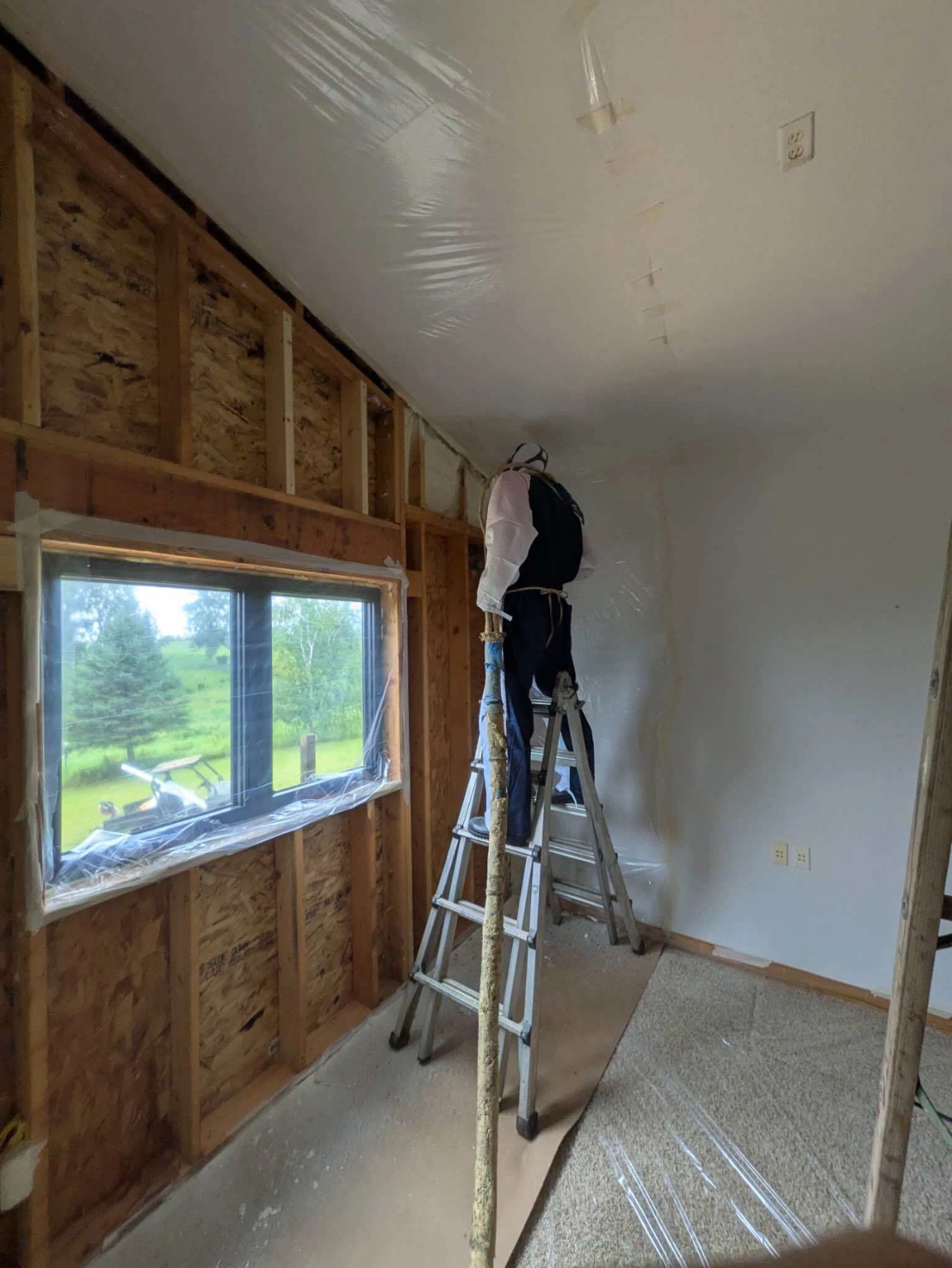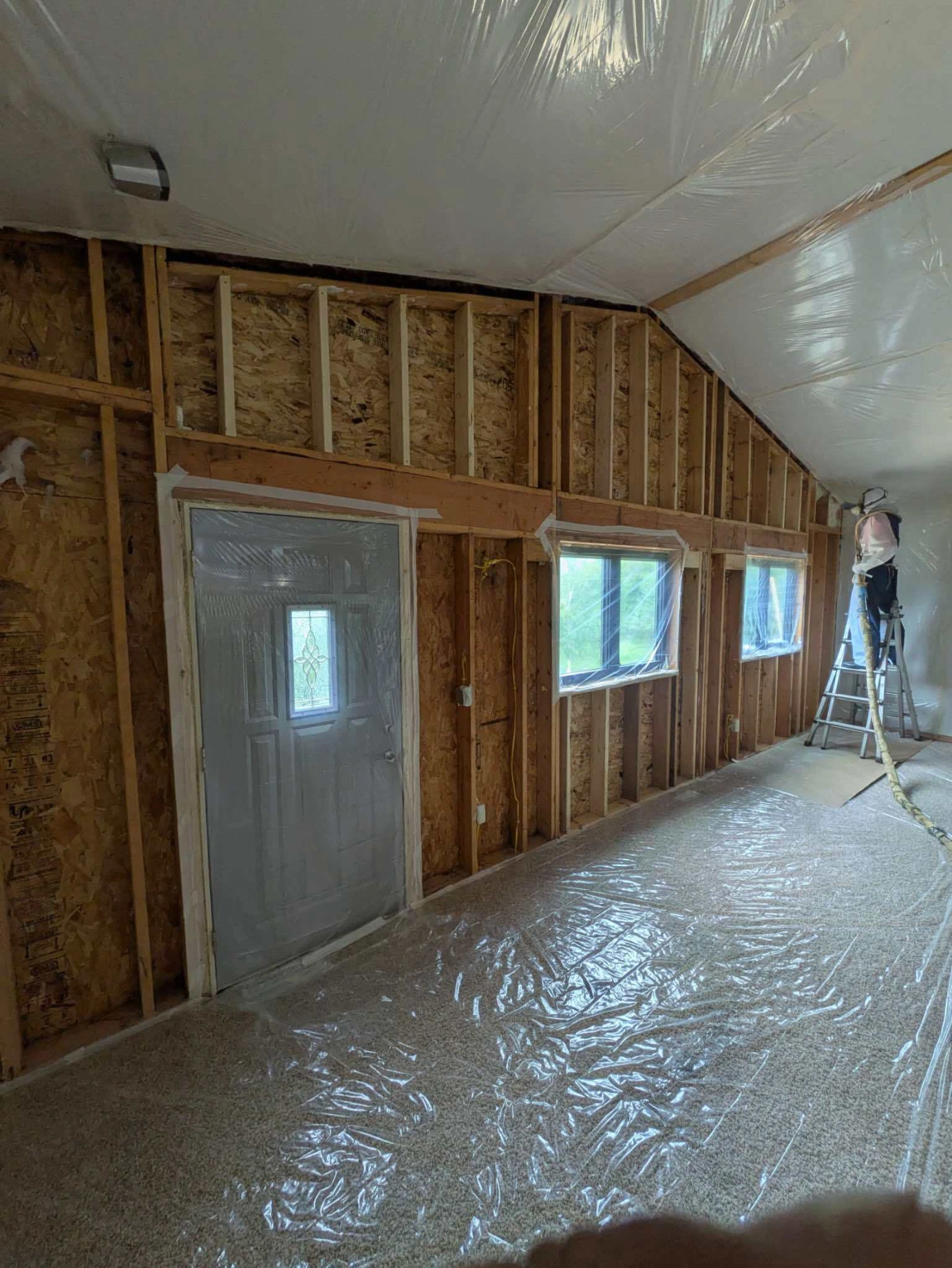Spray foam insulation does not break down in the traditional sense, but it does degrade slowly depending on environmental conditions and installation quality. Properly applied spray foam can maintain its structural integrity for 20 to 30 years or longer. However, degradation may occur due to ultraviolet exposure, moisture infiltration, or improper substrate preparation.
Closed-cell spray foam resists water absorption and supports structural strength, making it more durable than open-cell foam. Mechanical damage, chemical exposure, or incorrect curing can accelerate wear. Foam Worx Insulation uses experience-backed protocols to reduce these risks.
This article covers how spray foam behaves over time, what impacts its longevity, how to identify failure signs, and how to make informed decisions before installation.
How Spray Foam Insulation Ages Over Time
Material Stability
Spray foam undergoes physical changes once applied, solidifying as it reacts with air. Once cured, it forms a rigid or semi-rigid cellular structure. This form remains stable unless subjected to stressors like moisture, UV light, or temperature extremes.
Degradation Factors
- UV Exposure: Direct sunlight causes surface-level breakdown in exposed applications (e.g., unprotected crawlspaces).
- Moisture Intrusion: Inconsistent vapor barriers may allow long-term water ingress, weakening the foam’s bond and insulation capacity.
- Thermal Cycling: Extreme or repetitive expansion and contraction weakens cellular bonds.
- Poor Application: Uneven mixing, improper substrate temps, or low-pressure delivery reduce foam performance.
Comparison of Spray Foam Types by Longevity and Resistance
| Property | Closed-Cell Spray Foam | Open-Cell Spray Foam |
|---|---|---|
| Average Lifespan | 30+ years | 20-25 years |
| Water Resistance | High | Low |
| Structural Strength | Adds rigidity to framing | Soft, minimal load bearing |
| UV Vulnerability | High if unprotected | High if unprotected |
| Thermal Resistance (R-Value) | R-6 to R-7 per inch | R-3.5 to R-4 per inch |
Technical Specifications of Closed-Cell Spray Foam
| Characteristic | Value Range |
|---|---|
| Core Density | 1.75 to 2.2 lb/ft³ |
| Compressive Strength | 25 to 30 psi |
| Perm Rating (moisture) | <1 perm |
| R-Value per Inch | R-6.0 to R-7.0 |
| Service Temperature Range | -40°F to 180°F |
| Flame Spread Rating (ASTM E84) | <25 |
Signs of Deterioration in Installed Spray Foam
What to Watch For
- Crumbling or powdery texture on the surface
- Visible discoloration or UV damage
- Musty odor indicating trapped moisture
- Soft patches where structural rigidity should remain
- Separation from framing or surfaces
Bonus Tip: Use thermal imaging to check insulation consistency if you suspect hidden gaps or moisture.
Regional Considerations for Minnesota-Based Installations
Given Minnesota’s long, humid winters and dramatic temperature shifts, closed-cell spray foam outperforms open-cell options in most exterior-facing applications. It resists condensation buildup in attics, rim joists, and crawlspaces. Surface protection (such as coating or shielding) becomes more critical in barn roofs or agricultural buildings exposed to sun and snow.

Things to Check Before Installing Spray Foam
Before You Decide
- Substrate Cleanliness: Surfaces must be dry and dust-free for adhesion.
- Ventilation Setup: Proper exhaust and airflow during installation reduce exposure risk.
- Material Certification: Confirm supplier certifications (SPFA, ICC-ES).
- Fire Barrier Compliance: Some applications require intumescent paint over foam for code compliance.
Bonus Tip: Request core samples after installation to verify density and curing quality.
Spray Foam Services From Foam Worx Insulation
Foam Worx Insulation provides the following insulation systems, focusing on durability and regional performance:
- Closed-Cell Spray Foam: Ideal for long-lasting thermal and vapor barriers in exterior walls, attics, and basements.
- Blown-In Attic Insulation: Useful for retrofit applications where full access is not possible.
- Agricultural Insulation: Specialized foam applications for barns, metal buildings, and equipment sheds.
- Intumescent Paint: Fire-retardant coating applied over foam to meet local code requirements.
What People Usually Ask Before Choosing Foam
Common Considerations
Can spray foam be installed over old insulation?
Old insulation should be removed to ensure proper adhesion and prevent moisture issues.
Is foam insulation reversible or removable?
Spray foam becomes rigid and bonded. Removal is possible but labor-intensive and damaging to surfaces.
Do I need a vapor barrier with closed-cell foam?
In most cases, no. Closed-cell foam acts as a vapor barrier when applied at sufficient thickness.
Will pests damage spray foam?
Spray foam doesn’t attract pests or rodents, but they can nest around or behind it if other vulnerabilities exist.
Make Sure Your Insulation Holds Up Long Term
Spray foam can deliver decades of insulation if installed correctly and shielded from UV and moisture. Climate-specific strategies and post-installation checks reduce risk. Choose materials and methods that align with building design and local conditions.
Contact Foam Worx Insulation for Guidance
To discuss insulation options that last in Minnesota’s climate, contact Foam Worx Insulation at (507) 407-0678 or email [email protected]. The team offers expert guidance backed by field experience across residential, commercial, and agricultural properties.
Questions That Come Up Later
How can I tell if my foam insulation is still effective?
Use infrared thermography during winter to identify cold spots or compromised areas. Decreased comfort or higher energy bills can signal failure.
Can spray foam be recoated or refreshed?
Yes. Additional layers can be applied if the original foam remains intact and clean. Fire coatings may need reapplication over time.
Will spray foam lose its R-value over time?
Minimal R-value loss occurs if the foam is undisturbed and protected. Loss is higher if moisture or UV exposure is present.
Is closed-cell foam safe for indoor use long term?
Once cured, closed-cell spray foam is inert and does not emit harmful gases under normal conditions.
Does spray foam insulation require maintenance?
No regular maintenance is needed, but periodic inspection is advised in exposed areas or where conditions may change.




